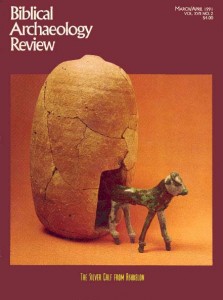The City of David: Discoveries from the Excavations
March 8–June 30, 1991

The City of David, located just south of the Temple Mount, was the earliest Jerusalem, original site of King David’s capital after he captured it from the Jebusites in about 1000 B.C. The 275 objects in this exhibit, shown outside Jerusalem for the first time, were unearthed between 1978 and 1985 by Yigal Shiloh, who directed the dig until its conclusion only two years before his death at age 50. The exhibit reconstructs the history of the City of David from 3000 B.C. to 70 A.D. On view are pottery, coins, inscriptions, statuettes, figurines and arrowheads. A highlight is the 53 bullae, or clay seal impressions, two bearing names mentioned in the Bible including Baruch, the prophet Jeremiah’s scribe. Photographs of various stages of the excavations, which included the clearing of Jerusalem’s earliest water supply system-Warren’s Shaft and tunnels-and the exposure of the steppedstone structure, probably a massive substructure for King David’s acropolis, complement the artifacts.
Already a library member? Log in here.
Institution user? Log in with your IP address.

